One of the prettiest little birds at the feeder this time of year is the male house finch. His red head and streaked red breast makes him stand out more distinctively than the sparrows, gold finches and juncos.
The female is the same size — about six inches long, with a brown back with brown stripes on her buff-colored breast. She does not have the reddish coloration.
The house finch is not a native Iowa bird. This species arrived in Iowa during the summer of 1982. Marcia Steck of Perry is credited with spotting the first one in Dallas County, and she recorded the second sighting in the state. Steck had read reports of these birds moving into Iowa and was watching her back yard bird feeder when she saw one.
House finches are originally from the west coast of the United States. According to Iowa ornithologist Gladys Black, in her book “Iowa Birdlife,” “In 1940, some enterprising cage-bird dealers on Long Island, New York, received an illegal shipment of house finches. As U.S. Fish and Wildlife Service agents were about to make their arrest, the dealers released the finches.”
The birds have now spread across the United States and even to Hawaii.
Many people do not like house finches because they compete with the native purple finches and tend to drive them away. The house finch also competes with the common English sparrow and studies have shown that in areas where the house finch becomes established, the sparrow population decreases.
House finches were increasing in numbers until the mid 1990s, when a bacterial eye disease, conjunctivitis, caused the death of one-third of the population. The bird’s eyes became swollen and covered with a crusty mucus that blinded them and they starved because they could not find food.
House finches are social birds that live in large flocks, so the disease spread quickly. Many scientists were concerned that the entire population could be wiped out. However, the finches are making a comeback, and their numbers are increasing.
This disease was also found in goldfinches, and it is sometimes a problem for domestic poultry. This form of conjunctivitis is not spread to humans. Studies have shown that the disease is more prevalent in winter, when the birds are in flocks and are visiting back yard feeders.
If you put out food for birds, you can help in controlling this problem by having several feeders spread out across your yard. This will reduce the number of birds at each feeder.
The house finch is a seed eater. Even when they are feeding their young, they eat very few insects. They play an important role in the environment by eating the seeds of noxious weeds. They also eat a variety of fruits and berries, and in fact the males’ red coloration is due to the carotenoid pigment found in fruits.
In the southwest desert, the male house finches have a yellowish-orange coloration because the foods the birds eat in that area do not have the red pigment.
House finches will nest in a variety of places, such as tree branches, eves and bird houses. They also seem to be fond of building a nest in hanging planters on porches and patios. They make cup-shaped nests from plant fibers, twigs, hair and various kinds of debris and then line it with fine leaves of grass.
The parents, unlike other birds, do not keep the nest clean. The nest is usually surrounded with the young’s fecal material. The finches have four to five bluish-white eggs speckled with brown and have two to three clutches per season. Both parents care for the young, and the young leave the nest two-and-a-half weeks after hatching.
The house finch is found in a variety of habitats: parks, gardens, brushy hill sides and fencerows, and they live in Iowa all year. House finches are an alien species, but the handsome males are always pleasant to watch at bird feeders, and in springtime they have a delightful song.




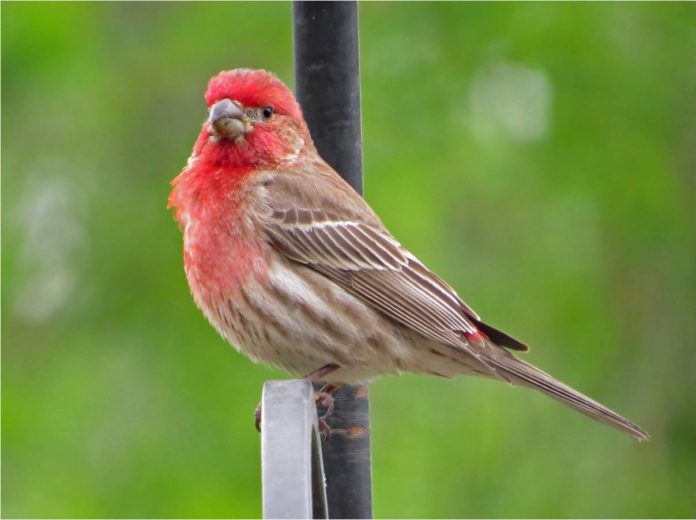





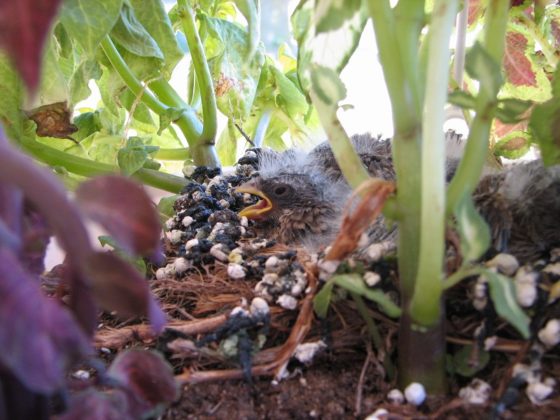
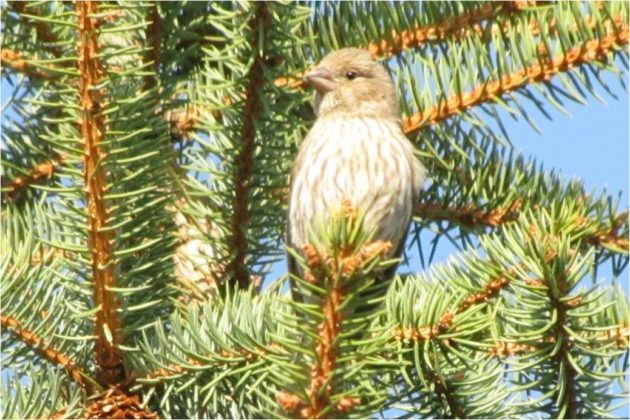

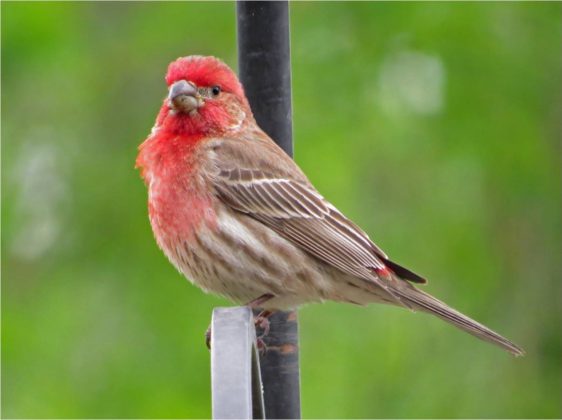
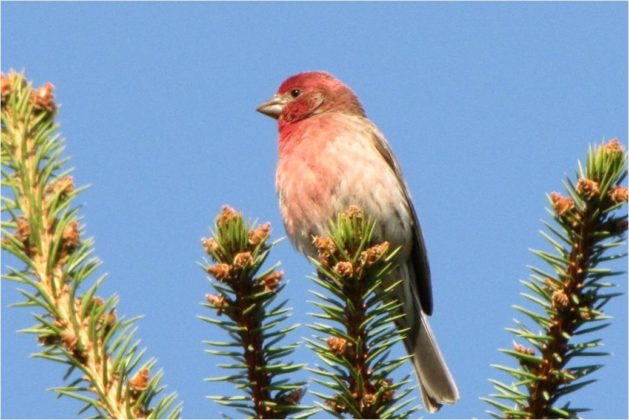








Lovely! I spied a pair of these on my back porch this first part of April in Kansas, making a nest in a hanging shell planter that a pair of cardinals had nested in year before last. I looked them up for identification as they are newbies to me in my area, and was delighted to have easily identified them by this great article and photographs on the perrynews.com. So far only one egg laid, but am watching and taking photos to share with the grandchildren!